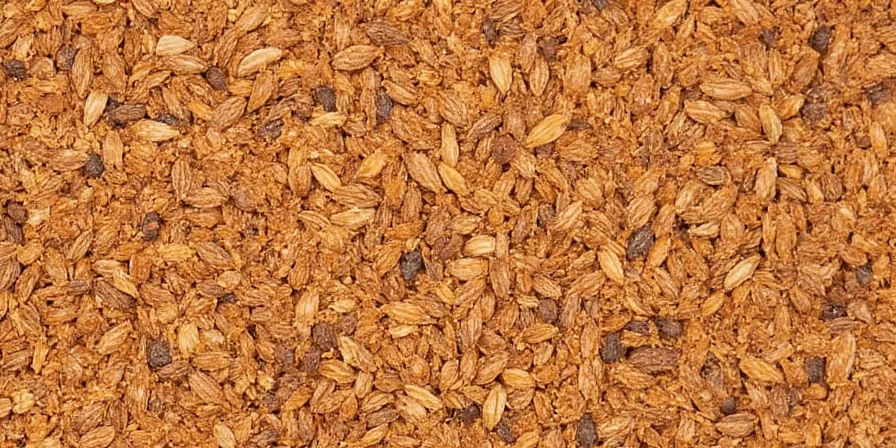What Is Apple Pie Spice and How to Make It
Apple pie spice is a simple blend of common kitchen spices that enhances apple-based recipes. At its core, it contains cinnamon, nutmeg, allspice, and often small amounts of cloves and ginger. This blend gives that familiar 'fall' flavor to pies, baked goods, and beverages without overpowering the natural taste of apples. Here's exactly what's in it and how to make your own.
Basic Apple Pie Spice Recipe
This simple 5-ingredient blend takes minutes to prepare and costs less than store-bought versions. Perfect for home bakers of all skill levels:
| Ingredient | Amount | What It Does |
|---|---|---|
| Cinnamon | 3 tablespoons | Provides warm sweetness |
| Nutmeg | 1 teaspoon | Adds depth and complexity |
| Allspice | 1 teaspoon | Creates balanced flavor |
| Cloves | 1/4 teaspoon | Enhances warmth (use sparingly) |
| Ginger | 1/2 teaspoon | Adds brightness |
How to Mix It
- Combine all ingredients in a small bowl
- Mix thoroughly until completely uniform
- Store in an airtight container away from light and heat
- Use within 6 months for best flavor
What's Actually in Apple Pie Spice?
Unlike pumpkin pie spice, apple pie spice focuses on warming flavors that complement (not overpower) apple's natural taste. The standard blend contains:
- Cinnamon (60-70%): The primary ingredient that gives sweetness
- Nutmeg (10-15%): Adds earthy depth without bitterness
- Allspice (10-15%): Combines flavors of cloves, cinnamon and nutmeg
- Cloves (5% or less): Used sparingly for sharp warmth
- Ginger (5-10%): Adds bright, citrusy notes
Apple Pie Spice vs Pumpkin Pie Spice
Many people confuse these two blends, but they serve different purposes:
| Characteristic | Apple Pie Spice | Pumpkin Pie Spice |
|---|---|---|
| Primary Use | Apple-based recipes | Pumpkin/squash recipes |
| Cinnamon Amount | Higher (60-70%) | Lower (40-50%) |
| Ginger Amount | Lower (5-10%) | Higher (20-30%) |
| Clove Amount | Slightly higher | Slightly lower |
How to Use Apple Pie Spice
Here are practical ways to use this blend in everyday cooking:
- In baking: Add 1-2 teaspoons to pie fillings, muffins, or breads
- In oatmeal: Stir 1/2 teaspoon into cooking liquid
- In beverages: Add 1/4 teaspoon to coffee, tea, or hot chocolate
- With fruit: Sprinkle on roasted apples, pears, or squash
- In yogurt: Mix with honey before adding to plain yogurt
Storage Tips for Maximum Freshness
To keep your blend flavorful:
- Store in an airtight container away from light and heat
- Keep away from strong-smelling items like coffee or onions
- Use within 6 months for best flavor (most store versions last 12-18 months)
- Check freshness by scent—should have warm, sweet aroma
Common Questions Answered
- Can I substitute pumpkin pie spice for apple pie spice?
- Yes, but reduce amount by 25% since pumpkin spice has more ginger. For best results, add extra cinnamon to balance flavors.
- What if I don't have all the spices?
- You can make a basic version with just cinnamon and nutmeg. For 2 tablespoons of blend: use 1.5 tablespoons cinnamon and 1/2 tablespoon nutmeg.
- Why does my spice blend taste bitter?
- Too much clove is the most common cause. Limit cloves to 1/4 teaspoon per batch. Also check if your spices are fresh—old spices lose flavor and can taste dusty.
- How much should I use in recipes?
- Start with 1 teaspoon per apple pie. For other recipes, begin with 1/4 teaspoon and adjust to taste. Remember, you can always add more but can't remove it!
Why Make Your Own Apple Pie Spice?
Creating your own blend offers three key advantages over store-bought versions:
- Fresher flavor: You control ingredient quality and freshness
- Cost savings: Homemade costs about half as much per batch
- Customization: Adjust ratios to match your personal taste preferences
The perfect blend varies by recipe and personal preference. Start with the basic ratio, then adjust next time—maybe you prefer more cinnamon for sweeter apples, or extra ginger for tart varieties. This simple customization makes all the difference in your final dish.











 浙公网安备
33010002000092号
浙公网安备
33010002000092号 浙B2-20120091-4
浙B2-20120091-4